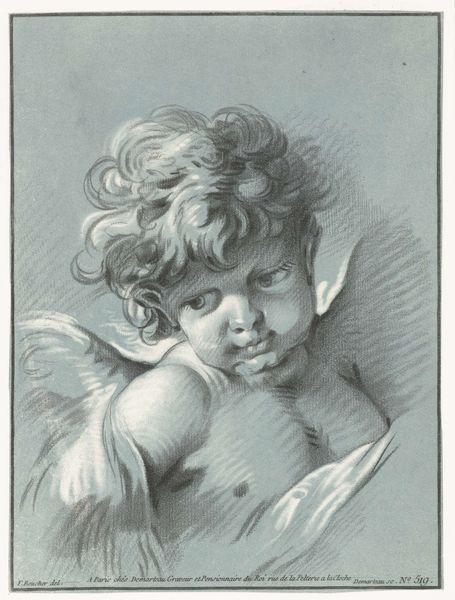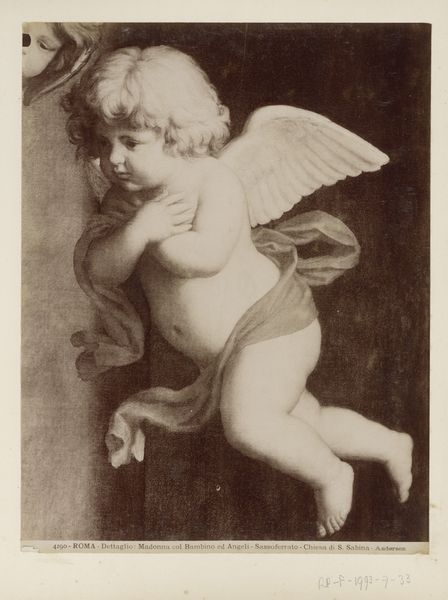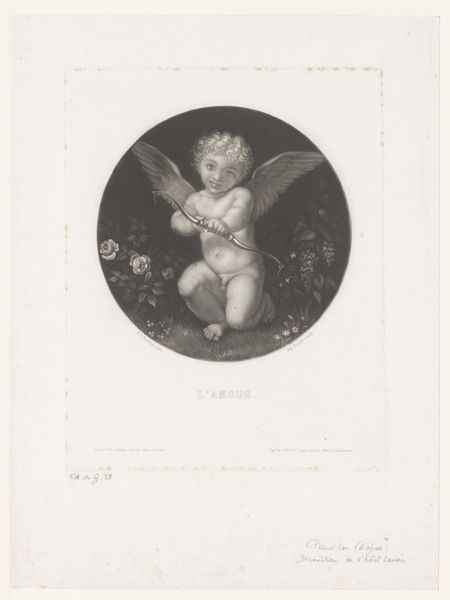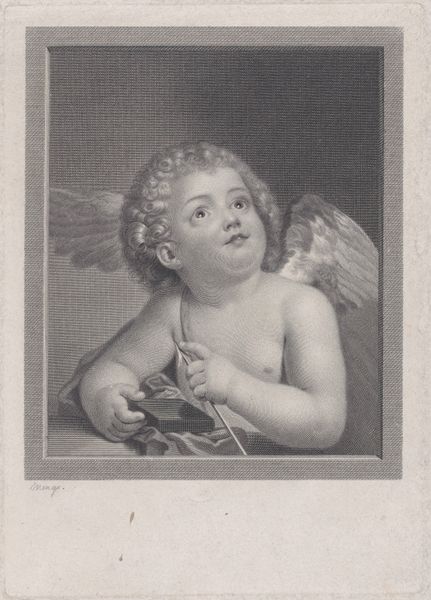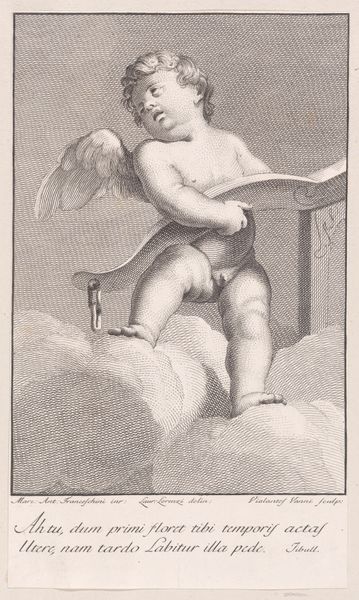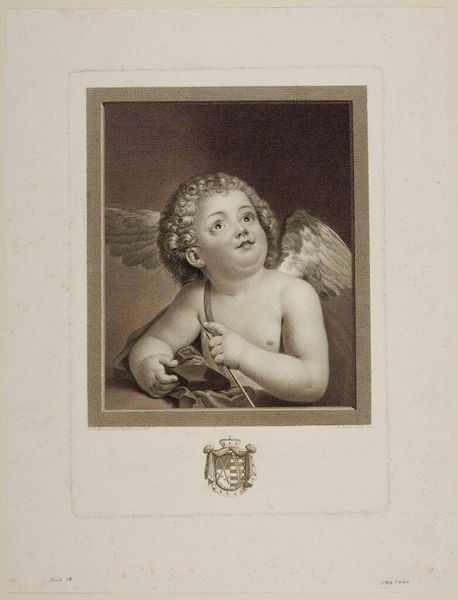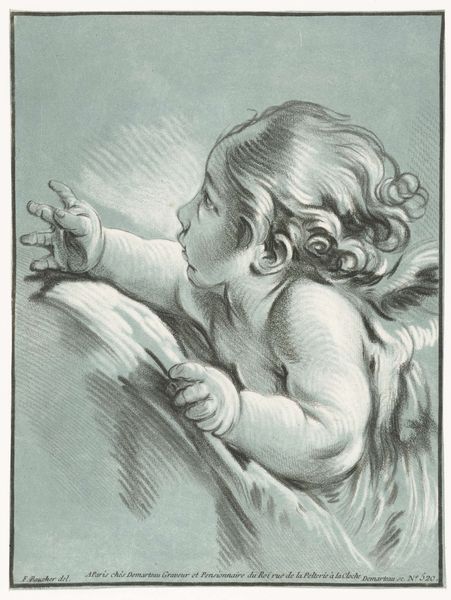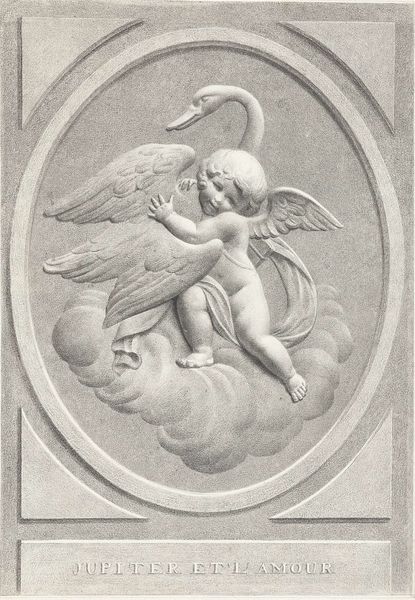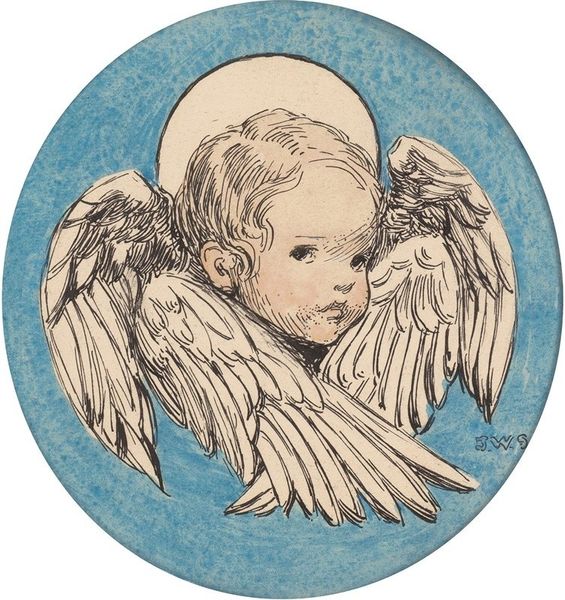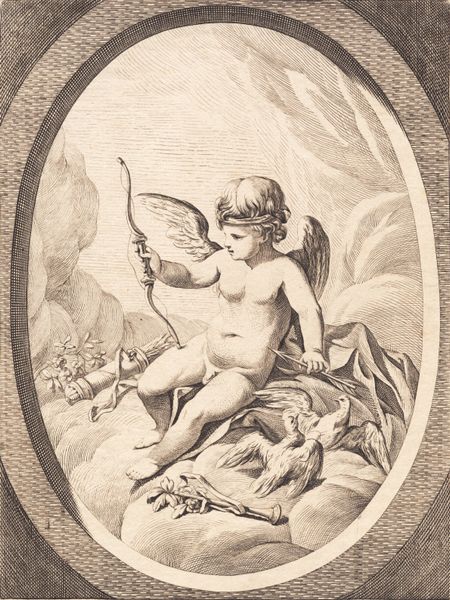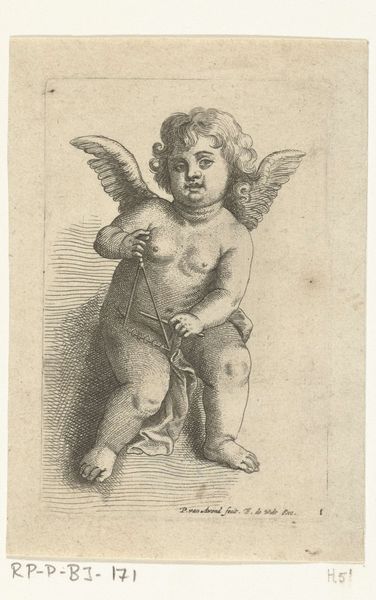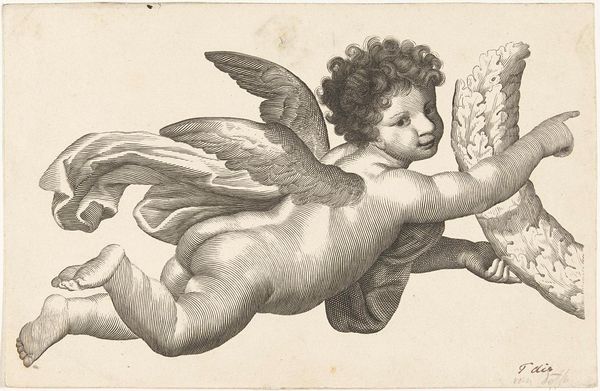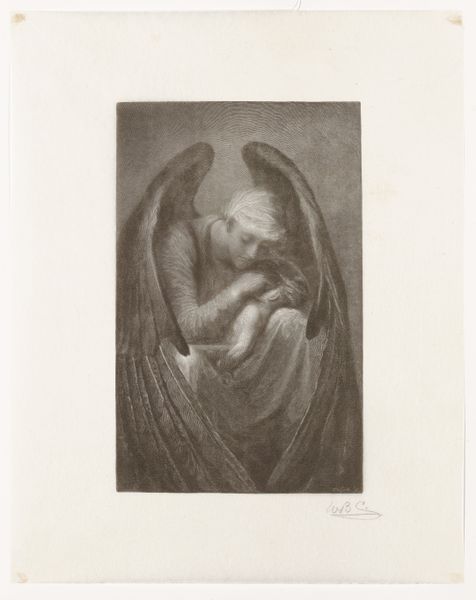
drawing, print, paper, chalk
#
portrait
#
drawing
#
self-portrait
# print
#
figuration
#
paper
#
form
#
11_renaissance
#
chalk
#
line
Dimensions: 164 × 142 mm
Copyright: Public Domain
Curator: Looking at this drawing, Raphael's "Putto," my immediate thought is one of soft contemplation. The figure is rendered in chalk and seems almost to float on the paper. Editor: Indeed. It is intriguing to consider that "Putto" might have served as a preparatory study. In Raphael's time, and considering workshop practices, drawings were crucial steps towards producing paintings and other large-scale commissions. We can see him grappling with the form and volume. Curator: The choice of chalk as a medium allows for delicate shading. One can observe its usage not just in the soft, rounded forms of the figure but in the diaphanous treatment of the cloud. Thinking of Renaissance chalk production – where did it come from, who prepared it, and how did its qualities enable the artist’s vision? Editor: And let’s not forget where the resulting art eventually found its place. “Putto”, despite its uncertain date, is part of Raphael's ongoing story within art history and the shifting values assigned to sketches versus finished works. How did collectors value drawings like these in his era versus how museums present them today? Curator: I’m drawn to the socioeconomic implications, actually. The material qualities of chalk were essential. Chalk sticks, manufactured by apothecaries and small workshops, represented tangible exchange value—a literal translation of powdered pigment, binder, and labour. To me, there's a distinct connection between art production and market economies. Editor: Exactly! And its acquisition reveals collecting patterns that dictated what kind of art received validation. I wonder, if this sketch hadn’t survived, what shifts that might cause in perceptions of Raphael’s creative process. Museums curate more than just art, after all; they shape art history. Curator: Absolutely. Understanding these drawings as both objects of labor and items of trade deepens our knowledge. This putto might reveal a far greater and previously unseen image of economic exchange within the art world. Editor: Looking at it through the institutional lens, the artwork really does offer us insight into what museums decide is important for public consumption and scholarly study, beyond just admiring a Renaissance master. Curator: In thinking about the materials, I've gained more perspective on Raphael's world, understanding "Putto" beyond merely its aesthetic appeal. Editor: Thinking about its collection and preservation offers yet another set of equally enlightening perspectives!
Comments
No comments
Be the first to comment and join the conversation on the ultimate creative platform.
